 The Life Cycle of Ladybirds
The Life Cycle of Ladybirds
News > The Life Cycle of Ladybirds >
The ladybird life cycle goes through 4 stages; egg, larva, pupa and then the adult beetle. The photos below show what each stage looks like.
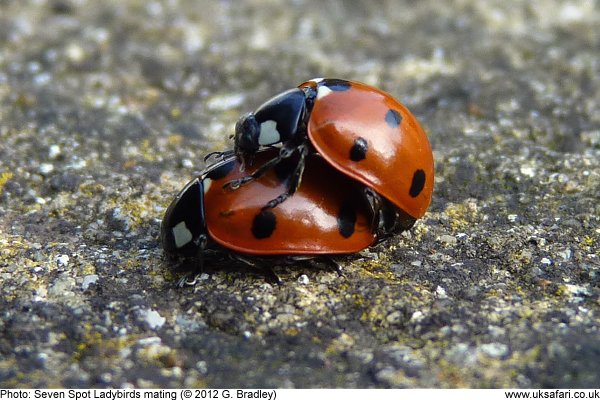
Mating - Besides feeding up on aphids ladybirds spend much of the springtime looking for a mate. Late April or early may is when most of the mating activity takes place.
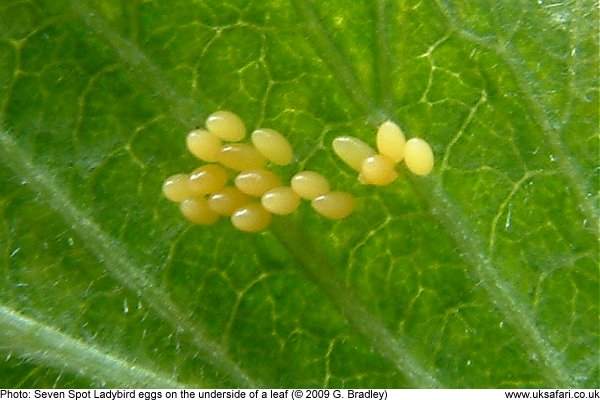
Egg - The eggs are bright yellow, about 1mm long, and are laid on the underside of leaves. They only take about one week to hatch.
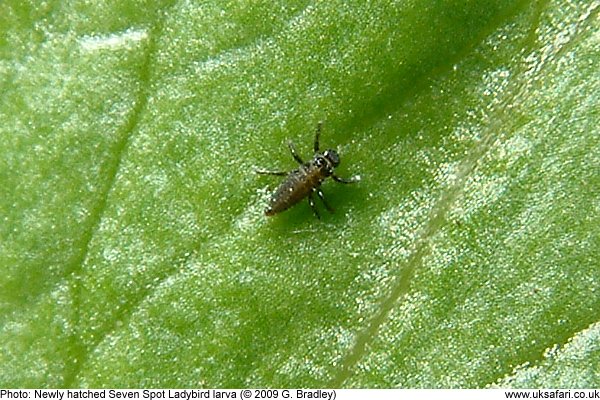
Newly Hatched Larva - The newly hatched larvae are about 3mm long but they are voracious feeders, and each time they grow they shed their outer skin. This period lasts about three weeks to a month.
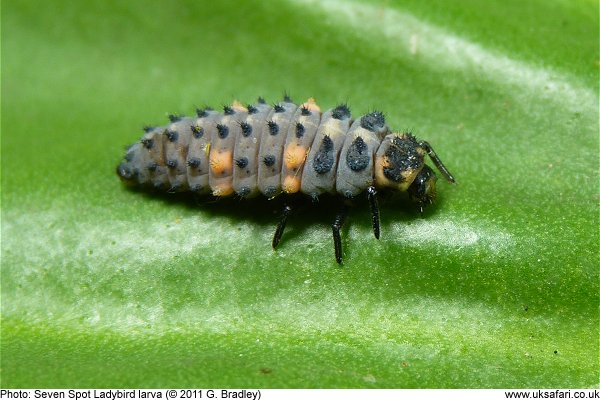
Fully Grown Larva - During the larval stage these insects will consume up to 500 plant lice, and when fully grown (usually by late June) they'll look like the one in the photo above.
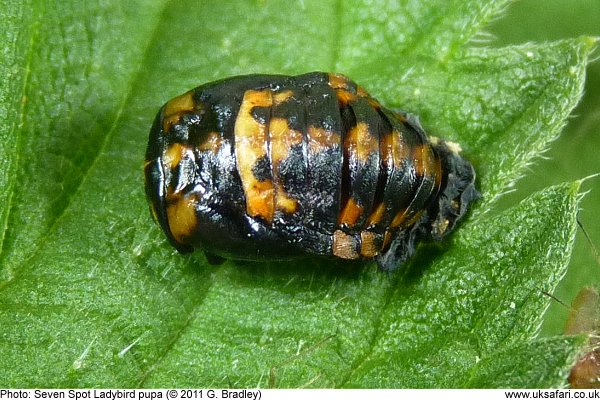
Pupa - The larva sheds it's skin one last time and changes into this immobile blob known as the 'pupa'. Inside the body dissolves into a soup and then starts reforming as an adult beetle. This process only takes about a week. You'll usually find these on vegetation in July.
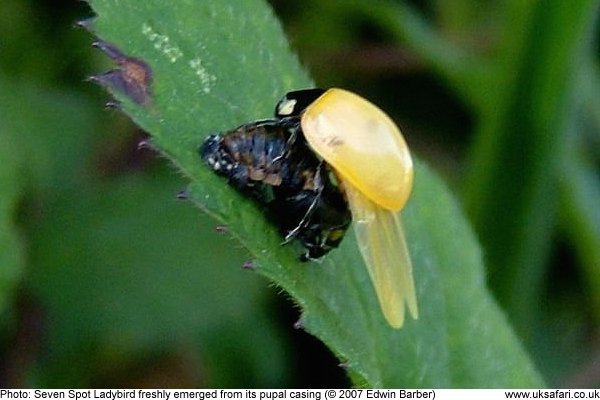
Emerging from Pupal Case - When it first emerges from pupation the ladybird looks very pale in colour but you can just about see where the spots are. After a short time the true colours come through.
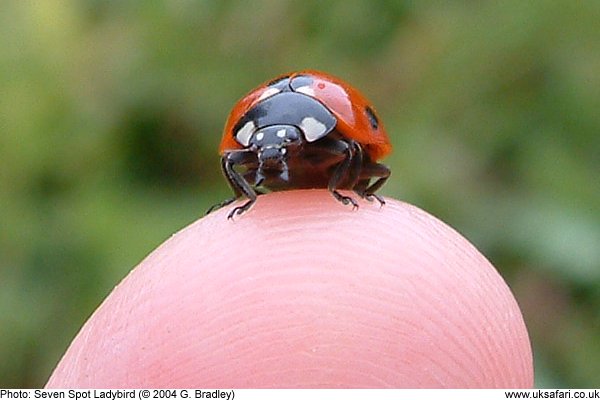
Adult or Imago - When the ladybird emerges from the pupa it is fully grown, and will remain in this form for the remainder of its life. The adult ladybird feeds through the autumn and then hibernates in cracks and crevices in plants and trees where it remains until March or April the following year.

 Popular Pages
Popular Pages
Amphibians, Bats, Badgers, Beetles, Birds, Birds of Prey, Bumble Bees, Butterflies, Caterpillars, Creepy-Crawlies, Deadly Spiders, Dolphins, Dragonflies, E-Postcards, False Widow Spiders, Free Newsletter, Frogs, Fungi, Garden Spiders, Glow-Worms, Grey Squirrels, Hedgehogs, House Spiders, Ladybirds, Mammals, Marine Mammals, Moths, Owls, Reptiles, Spiders, Toads, Trees, Wildlife Hospitals
© Copyright 2017 G. Bradley - UK Safari | About Us | Links | Contributors



 Related Pages
Related Pages
